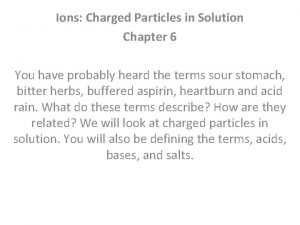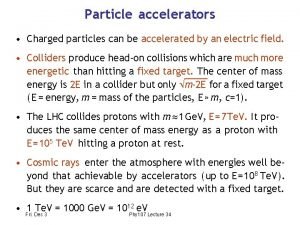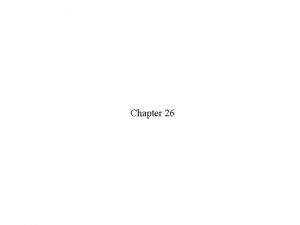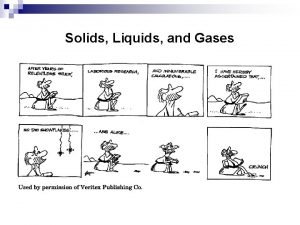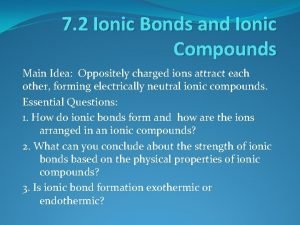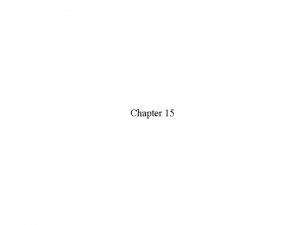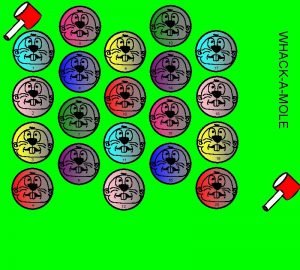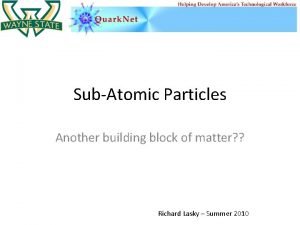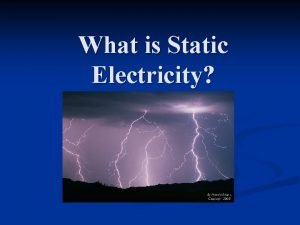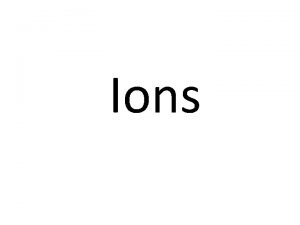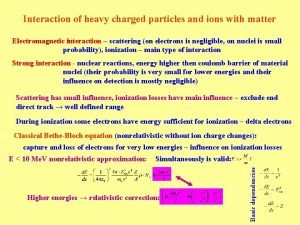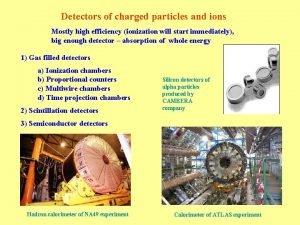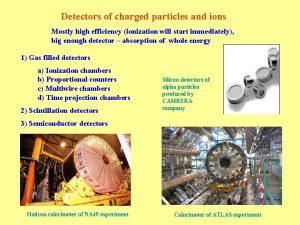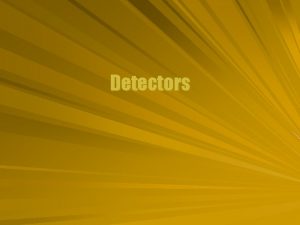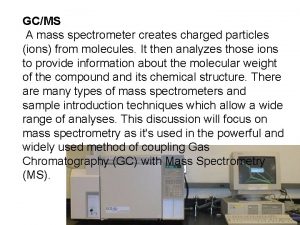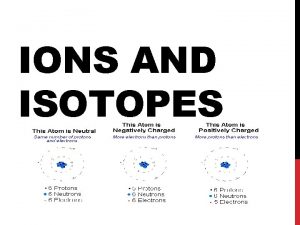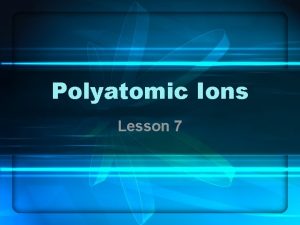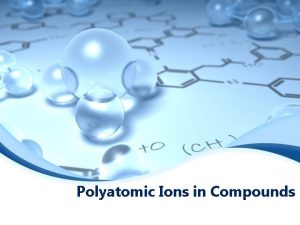IONS Ions Charged particles which form when an













- Slides: 13

IONS

Ions • Charged particles which form when an atom (or group of atoms) gains or loses electrons.

Ions • Charged particles which form when an atom (or group of atoms) gains or loses electrons. • Ions don’t have equal number of PROTONS and ELECTRONS

Ions • Charged particles which form when an atom (or group of atoms) gains or loses electrons. • Ions don’t have equal number of PROTONS and ELECTRONS • Each ion (or group) is represented by a symbol which shows the charge of the atom

Ions • Charged particles which form when an atom (or a group of atoms) gains or loses electrons. • Ions don’t have equal number of PROTONS and ELECTRONS • Each ion (or group) is represented by a symbol which shows the charge of the atom • Metals form positively charged ions while non-metals may form negatively charged ions.

Ions • Charged particles which form when an atom (or a group of atoms) gains or loses electrons. • Ions don’t have equal number of PROTONS and ELECTRONS • Each ion (or group) is represented by a symbol which shows the charge of the atom • Metals form positively charged ions while non-metals may form negatively charged ions. • EG. Na+ is a sodium ion. The + means the charge is +1. This means it has LOST one electron.

Ions • Charged particles which form when an atom (or a group of atoms) gains or loses electrons. • Ions don’t have equal number of PROTONS and ELECTRONS • Each ion (or group) is represented by a symbol which shows the charge of the atom • Metals form positively charged ions while non-metals may form negatively charged ions. • EG. Na+ is a sodium ion. The + means the charge is +1. This means it has LOST one electron • EG. O 2 - is an oxide ion. The 2 - sign means it has 2 more electrons than protons

Ions • Cations – positively charged ions that have lost electrons.

Ions • Cations – positively charged ions that have lost electrons. • Anions – negatively charged ions which have gained electrons.

Ions • Cations Anions Symbol Name K+ Potassium Cl- Chloride H+ Hydrogen NO 3 - Nitrate Na+ Sodium HCO 3 - Hydrogen Carbonate Li+ Lithium CH 3 COO- Ethanoate Fe 2+ Iron (II) OH- Hydroxide Mg 2+ Magnesium O 2 - Oxide 2 Ca Zn 2++ Calcium Zinc 2 S SO- 42 - Sulfate Pb 2+ Lead CO 32 - Carbonate Cu 2+ Copper (II) O 2 - Sulfide Fe 3+ Iron (III) Al 3+ Aluminium

Questions: 1. The chloride ion has 18 electrons and is charged -1. a) Write the symbol for the chloride ion b) How many protons has the chloride ion got? 2. The magnesium ion has 12 protons and is charged +2 a) Write down its symbol b) Decide how many electrons the magnesium ion has

Fill in this table: Name of element Symbol Atomic number Number of electrons Ion(s) formed Number of electrons lost or gained Cl- One gained Cu 2+ Two lost Magnesium Na 11 Oxygen 19 Li+

Fill in this table: Name of element Symbol Atomic number Number of electrons in the ion Ion(s) formed Number of electrons lost or gained Magnesium Mg 12 10 Mg 2+ Two lost Chlorine Cl 17 18 Cl- One gained Sodium Na 11 10 Na+ One lost Copper Cu 29 27 Cu 2+ Two lost Oxygen O 8 10 O 2 - Two gained Potassium K 19 18 K+ One lost Lithium Li 3 2 Li+ One lost
 Ions charged particles in solution
Ions charged particles in solution The search for fractionally charged particles has–
The search for fractionally charged particles has– Charged particles can be accelerated by
Charged particles can be accelerated by For charged particles, what is the quantity q/m called?
For charged particles, what is the quantity q/m called? Gas like mixture of charged particles
Gas like mixture of charged particles Properties of ionic compounds
Properties of ionic compounds What do the roman numerals in a cation's name indicate?
What do the roman numerals in a cation's name indicate? Which of the charges qa, qb, and qc are positively charged?
Which of the charges qa, qb, and qc are positively charged? An industrially important element contains 26
An industrially important element contains 26 Building block of matter which contains subatomic particles
Building block of matter which contains subatomic particles How ions form
How ions form Present continuous affirmative sentences
Present continuous affirmative sentences Is cotton negatively charged
Is cotton negatively charged Skyward newrichmond
Skyward newrichmond
